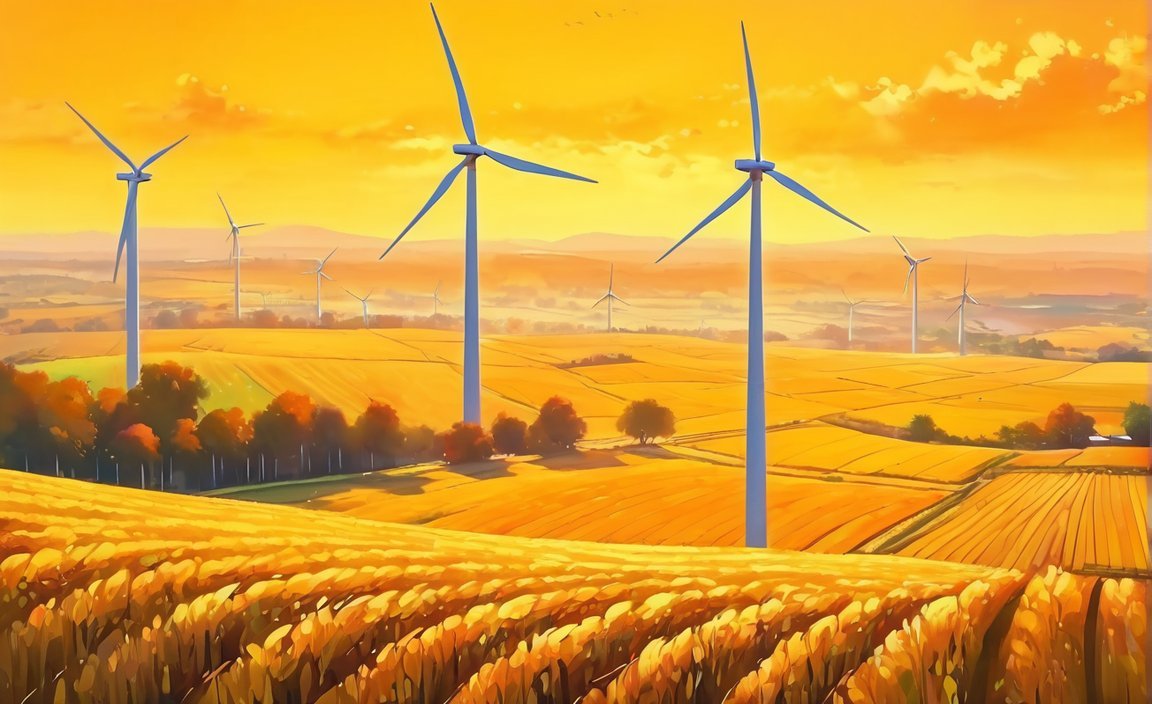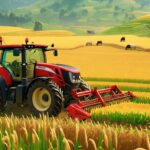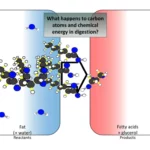Assessing the Pros and Cons of Wind Power in Agriculture: As renewable energy becomes increasingly critical in combating climate change, farmers are considering wind power as a viable solution to reduce energy costs, increase sustainability, and mitigate carbon emissions. However, like any technology, wind power comes with its own set of advantages and disadvantages in the agricultural sector. In this article, we will explore the potential benefits and drawbacks of incorporating wind power into farming operations, providing valuable insights for agricultural stakeholders seeking to harness this clean energy source effectively.
Key Takeaways:
- Wind power is a viable option for meeting the energy needs of farming operations, providing several benefits for agriculture.
- One of the main advantages of wind energy in agriculture is that it can provide an additional source of income for farmers and landowners who lease their land.
- Wind energy is a free and abundant resource, unlike costly fossil fuels, making it an attractive option for agricultural operations.
- Wind turbines on agricultural land can diversify income for farmers, preserve land, mitigate climate change, and support local communities.
- The colocation of wind energy and agriculture can provide additional income to farmers and serve as a means of insurance due to its stable income potential.
- Wind power is considered cost-effective and one of the lowest-priced energy sources available today, especially with advancements in science and technology.
- Wind energy can contribute to both clean energy and economic recovery in rural communities, supporting sustainable development.
Advantages and Disadvantages of Wind Power in Agriculture

In today’s agricultural landscape, finding sustainable and cost-effective energy solutions is becoming increasingly important. One such solution that has gained significant traction is wind power. Harnessing the power of the wind through the use of wind turbines presents several advantages and disadvantages for the agriculture industry. Let’s take a closer look at these benefits and drawbacks.
Advantages of Wind Power in Agriculture
1. Additional Source of Income
One of the primary advantages of wind energy in agriculture is the potential for farmers and landowners to generate additional income. By leasing their land for wind turbines, farmers can capitalize on this renewable energy source and diversify their revenue streams. This can be particularly beneficial during times of fluctuating crop prices or unpredictable weather conditions.
2. Free and Abundant Resource
Unlike traditional energy sources such as fossil fuels, wind energy is both free and abundant. The wind blows all around us, making it a readily available resource for agricultural operations. By harnessing this clean and renewable energy, farmers can reduce their dependence on costly fuels and contribute to a more sustainable future.
3. Diversification and Land Preservation
Wind turbines on agricultural land offer more than just renewable energy generation. They provide a means for farmers to diversify their income, mitigating the risks associated with traditional farming practices. Furthermore, wind energy projects can help preserve land by discouraging urban development and maintaining the rural landscape.
4. Mitigation of Climate Change
The colocation of wind energy and agriculture presents an opportunity to combat climate change. Wind turbines produce no greenhouse gas emissions, contributing to a reduction in carbon emissions and the overall sustainability of agricultural practices. By adopting wind power solutions, farmers can actively contribute to the fight against climate change and protect the environment for future generations.
5. Cost-Effectiveness
Thanks to advancements in science and technology, wind power has become an increasingly cost-effective energy source. Land-based, utility-scale wind turbines are among the lowest-priced options available today. As a result, farmers can potentially reduce their energy costs and allocate savings towards other aspects of their agricultural operations.
6. Economic Benefits for Rural Communities
Wind power has the potential to bring economic benefits to rural communities. As wind energy’s share in the electricity mix grows, it can contribute to sustainable development and provide a safety net for farmers during economic downturns. The revenue generated from wind projects can stimulate local economies, support job creation, and enhance the overall well-being of rural communities.
Disadvantages of Wind Power in Agriculture
1. Impact on Wildlife
Although wind power offers numerous advantages, it is not without its drawbacks. One concern is the potential impact on wildlife, particularly birds and bats. Wind turbines can disrupt migration routes and pose a risk of collision for flying animals. However, advancements in turbine design and placement strategies are continually being made to mitigate these risks and minimize the impact on wildlife.
2. Visual and Noise Impacts
Wind turbines, especially when grouped together in wind farms, can have a visual impact on the surrounding landscape. Some individuals find these structures visually unappealing, while others appreciate the aesthetic of renewable energy. Additionally, wind turbines can generate low-frequency noise, which can be bothersome to nearby residents. Once again, technological advancements are helping to address these concerns, focusing on quieter turbine designs and proper placement to minimize potential disturbances.
3. Variability and Intermittency
Wind power is dependent on the availability and strength of the wind. As a result, it can be variable and intermittent. This means that wind energy generation can fluctuate, leading to potential challenges in maintaining a consistent energy supply. However, advancements in energy storage technologies, such as battery systems, are helping to address this limitation and ensure a stable power supply from wind turbines.
4. Land Use and Spatial Considerations
Wind turbines require sufficient land for installation, which can pose constraints in areas with limited available space. The placement of wind turbines needs to consider factors such as existing agricultural activities, infrastructure, and visual impacts. Effective land use planning and consultation with farmers are crucial to maximize the benefits and minimize potential conflicts associated with wind power projects.
In conclusion, wind power offers several advantages and disadvantages for the agriculture industry. It presents a valuable opportunity for farmers and landowners to diversify their income, mitigate climate change, and reduce energy costs. However, it is important to carefully consider potential impacts on wildlife, visual aesthetics, and land use when implementing wind power solutions. By addressing these challenges through ongoing research and innovation, wind power can continue to play a significant role in promoting sustainable agricultural practices.
Did you know that wind energy has its own set of advantages and disadvantages? Explore the pros and cons of wind energy by clicking here: advantages and disadvantages of wind energy.
If you’re curious about the advantages and disadvantages of wind energy conversion systems specifically, you won’t want to miss this! Check out our detailed analysis by clicking here: advantages and disadvantages of wind energy conversion system.
Disadvantage 1: Dependence on Wind Patterns

As fantastic as wind power may be, it does come with a few disadvantages. One of the primary concerns is the dependence on wind patterns.
Imagine relying on the whims of the wind. It’s like a farmer planting seeds and hoping for the best. Wind power, just like agriculture, is at the mercy of natural forces. While the wind turbines may generate electricity when the wind is blowing, there will inevitably be times when the breeze is gentle or nonexistent.
This characteristic creates a variability and intermittency in wind power generation. It means that the energy supply from wind turbines is not constant, resulting in challenges for maintaining a consistent electricity source.
The dependence on wind patterns can be worrisome. During periods of low wind, the energy generation from wind turbines may not meet the demand. As a result, farmers may have to rely on alternative sources of electricity to bridge the gap, potentially increasing their costs.
Additionally, the fluctuating energy production can affect the stability of the power grid. Without a steady and predictable supply of energy, the grid operators face challenges in balancing the demand and supply effectively.
However, it’s important to note that advancements in technology and the integration of energy storage systems can mitigate this disadvantage to some extent. These storage systems help store excess electricity during high wind periods and release it during low wind periods, ensuring a more consistent energy supply.
While dependence on wind patterns poses a challenge, it’s crucial to assess the overall benefits and drawbacks of wind power in agriculture to make informed decisions. As agricultural stakeholders, understanding the limitations of wind energy allows us to develop strategic plans for a reliable and sustainable energy future in farming.
Key Takeaways:
- Wind power in agriculture is subject to the variability and intermittency of wind patterns.
- Dependence on wind patterns can lead to challenges in maintaining a consistent energy supply.
- Low wind periods may require farmers to rely on alternative sources of electricity, potentially increasing costs.
- Advancements in technology and energy storage systems can help mitigate this dependence on wind patterns.
Citations:
1. Advantages and Disadvantages of Wind Power – Greentumble
2. Advantages and Disadvantages of Wind Energy – Wind Power Plus
Disadvantage 2: Initial Investment and Maintenance Costs
When considering the implementation of wind power in agriculture, it is essential to address the disadvantages associated with this renewable energy source. One significant concern is the initial investment and maintenance costs involved.
Initial Investment
Investing in wind power requires a substantial upfront capital investment. Farmers and agricultural stakeholders who wish to harness the power of wind need to install wind turbines, which can be expensive. The cost of purchasing and installing the necessary equipment, including turbines and electrical infrastructure, can be a significant financial burden for farmers, especially for those with limited resources.
Maintenance Costs
In addition to the initial investment, ongoing maintenance costs are another consideration when it comes to wind power. Wind turbines require regular maintenance to ensure their optimal performance and longevity. This includes routine inspections, repairs, and replacements of components such as blades, generators, and control systems. These maintenance activities can incur additional expenses for farmers, which need to be factored into the overall cost of operating wind turbines.
Balancing Costs and Benefits
Despite the initial investment and maintenance costs, it is important to weigh them against the potential advantages of wind power in agriculture. While the upfront expenses and ongoing maintenance may seem daunting, one should consider the long-term benefits and potential return on investment.
By harnessing wind power, farmers have the opportunity to generate renewable energy on their land, reducing their dependence on costly fossil fuels and conventional grid electricity. Over time, the savings in energy costs may offset the initial investment and ongoing maintenance expenses. Additionally, wind power can provide a source of additional income for farmers through leasing their land for wind turbines.
It is crucial for farmers to conduct a thorough cost-benefit analysis and explore financing options available to make wind power a viable and sustainable solution. Government incentives, grants, and other financial support programs may help offset the initial investment and reduce the burden of maintenance costs.
In conclusion, while initial investment and maintenance costs remain a disadvantage of wind power in agriculture, it is essential to consider the long-term benefits and potential return on investment. By carefully evaluating the costs and exploring financing options, farmers can determine if wind power is a feasible and economically viable solution for their specific agricultural operations.
Overall, while there are certain challenges in terms of costs, wind power has the potential to revolutionize and advance the agricultural industry, providing a sustainable and renewable source of energy. It is essential to assess the advantages and disadvantages of wind power in the context of individual agricultural settings and long-term sustainability goals.
Key Takeaways:
- Implementing wind power in agriculture requires a significant initial investment and incurs maintenance costs for ongoing turbine upkeep.
- Farmers need to carefully evaluate the costs and potential return on investment when considering wind power.
- Government incentives and financial support programs may offset the initial investment and reduce maintenance costs.
- Long-term benefits, such as reduced energy costs and additional income through leasing land, should be considered when weighing the disadvantages of initial investment and maintenance costs.
- Conducting a thorough cost-benefit analysis and exploring financing options can help determine the feasibility and economic viability of wind power in agriculture.
Sources:
1. Greentumble
2. Department of Physics, Stanford University
Advantage 3: Potential to mitigate carbon emissions
Key Takeaways:
– Wind power offers a significant advantage in mitigating carbon emissions, contributing to global efforts to combat climate change.
– By harnessing the power of wind to generate electricity, farmers can reduce their reliance on fossil fuels and lower greenhouse gas emissions.
– The transition to wind power not only benefits the environment but also yields multiple co-benefits, such as improved air quality and human health.
With the growing urgency to address climate change, finding solutions to reduce carbon emissions has become paramount. One of the key advantages of wind power in agriculture is its potential to mitigate carbon emissions and make a significant impact on reducing greenhouse gases.
Renewable energy sources like wind power emit fewer greenhouse gases compared to traditional fossil fuels such as coal, oil, and gas. By utilizing wind turbines to generate electricity, farmers can contribute to the global transition towards a low-carbon economy.
The potential to mitigate carbon emissions is a critical advantage of wind power in agriculture. By harnessing the power of wind, farmers can significantly reduce their carbon footprint. Unlike traditional energy sources that rely on the combustion of fossil fuels, wind turbines produce clean, renewable energy without generating any greenhouse gas emissions.
Transitioning to wind power not only aligns with global climate goals but also brings multiple co-benefits. For instance, reducing emissions from burning fossil fuels improves air quality and human health, preventing economic losses linked to health issues caused by pollution.
Moreover, wind power’s contribution to mitigating climate change extends beyond carbon emissions reductions. It also helps mitigate other environmental impacts associated with traditional energy sources. The production of electricity from wind does not pollute the air, water, or land, contributing to the overall sustainability of agricultural operations.
In conclusion, when assessing the advantages of wind power in agriculture, the potential to mitigate carbon emissions is a key factor to consider. By embracing wind power, farmers can play a crucial role in reducing greenhouse gas emissions, improving air quality, and fostering a more sustainable future.
Sources:
– World Economic Forum, link
– NASA, link
FAQ
Q1: What are the advantages of using wind power in agriculture?
A1: Wind power in agriculture offers several advantages, including the ability to diversify income for farmers, reduce energy costs, mitigate carbon emissions, and support local communities. It is a renewable and sustainable energy source that does not emit greenhouse gases, contributing to a cleaner environment. Additionally, wind power provides price stability and can be a consistent source of revenue for farmers.
Q2: How does wind power benefit farmers financially?
A2: Wind power can provide additional income for farmers and landowners who lease their land for wind turbine installation. By diversifying their income sources, farmers can reduce their dependence on traditional agricultural activities and fluctuations in crop prices. Wind energy projects can offer stable and long-term income potential, acting as a means of insurance for farmers.
Q3: Does wind power reduce dependence on fossil fuels in agriculture?
A3: Yes, wind power significantly reduces dependence on fossil fuels in agriculture. Unlike fossil fuels, wind energy is a free and abundant resource, making it an attractive option for agricultural operations. By utilizing wind power, farmers can reduce their exposure to price fluctuations and volatility in the global energy market. This helps create a more sustainable energy future for agricultural activities.
Q4: What are the challenges associated with wind power in agriculture?
A4: Some challenges associated with wind power in agriculture include the specific location requirements for wind turbines and the variability of wind strength in different areas. Identifying suitable sites for wind turbine installation and addressing potential conflicts with existing land use can be a challenge. Additionally, the initial cost of implementing wind power systems and the technology’s immaturity may pose obstacles for farmers.
Q5: Can wind power be integrated into existing agricultural activities?
A5: Yes, wind power can be integrated into existing agricultural activities. Wind turbines have a minimal footprint during installation and can be built in various locations, including on existing farmland, without disrupting agricultural operations. This allows farmers to utilize their land for multiple purposes, diversifying their income and preserving farmland.












